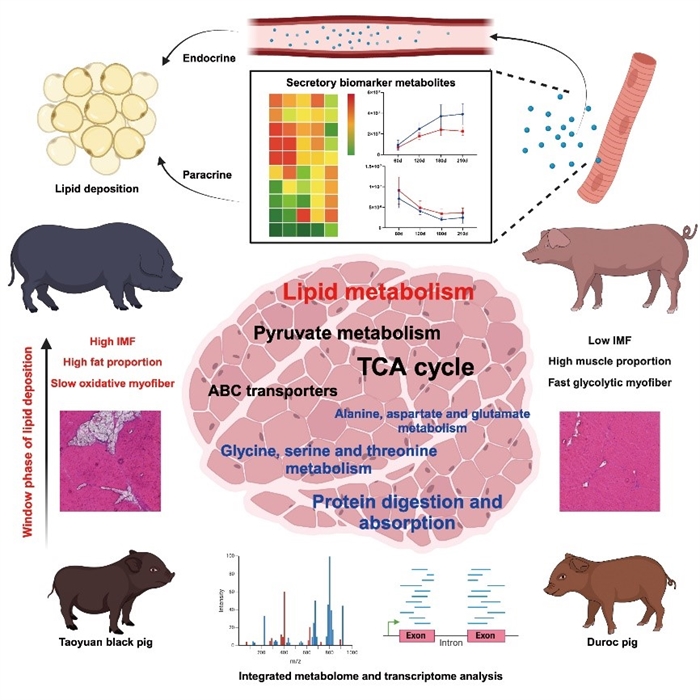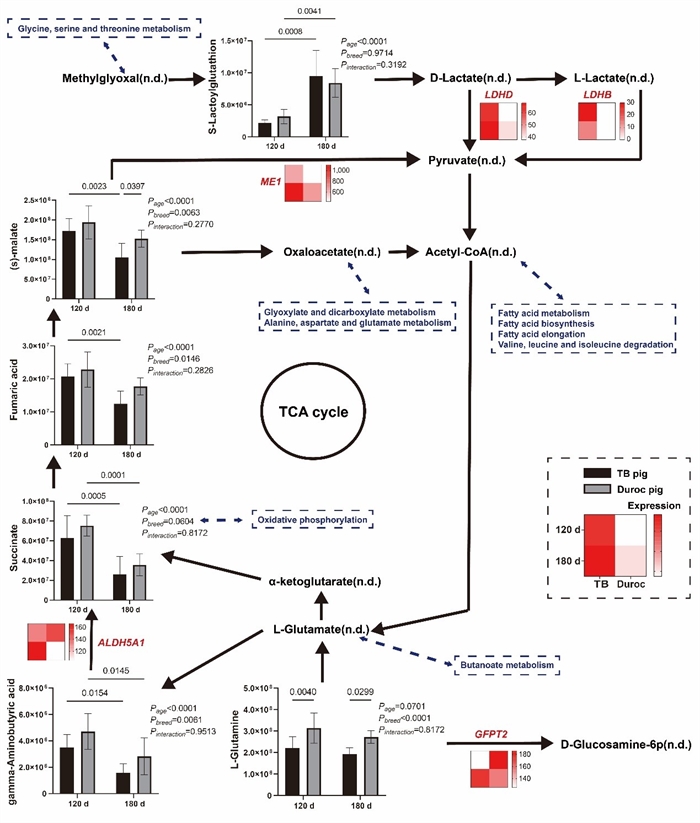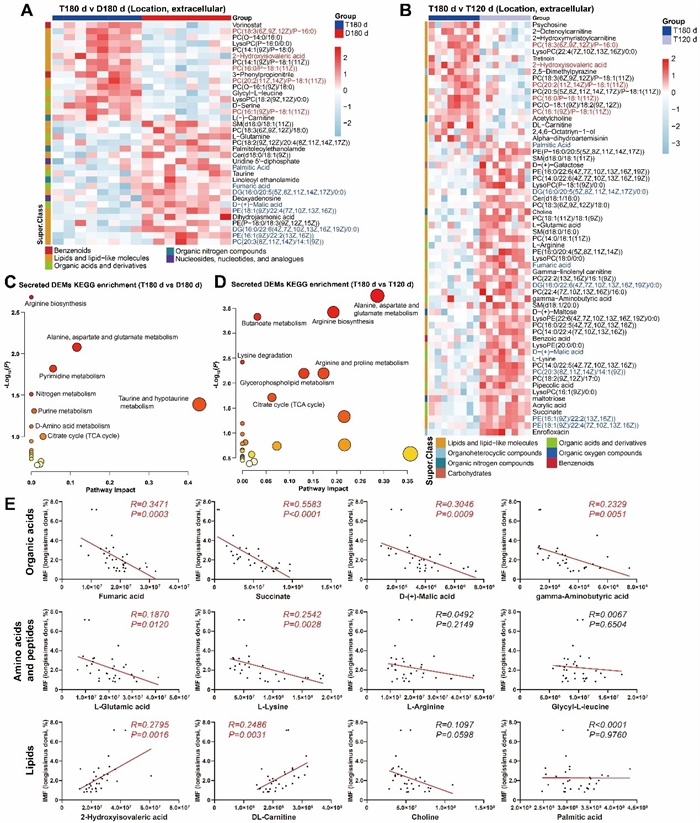Muscle-Adipose Tissue Crosstalk Regulate Lipid Deposition in Pig
A research team led by Prof. Yin Yulong from the Institute of Subtropical Agriculture, Chinese Academy of Sciences, investigated the metabolic difference of longissimus dorsi muscle between Taoyuan black pigs and Duroc pigs at different ages, and revealed the mechanism of muscle-adipose tissue interaction mediated by muscle-derived secretory metabolites.
Muscle and adipose tissues, two important metabolic and secretory organs, communicate with each other through secretory factors, also known as the "muscle-adipose axis". Secretory metabolites, the important mediators of muscle-adipose tissue crosstalk, regulate muscle differentiation, metabolic homeostasis and lipid deposition. Compared with lean Duroc pig, obese Taoyuan Black pig, a Chinese native breed originated in Taoyuan Count, has higher intramuscular fat content, slow myofiber proportion, excellent meat quality and richer peripheral fat deposition. It has high economic value to regulate the lipid deposition of Taoyuan black pigs. At the same time, the exploitation and utilization of Chinese native pig resources is of great significance to the revitalization of seed industry. Moreover, Taoyuan black and Duroc pigs are also ideal animal models for studying mechanisms of muscle-adipose tissue interaction and metabolic diseases.
Published in SCIENCE CHINA Life Sciences on Jan 10, the researchers use non-targeted metabolomics analysis of longissimus dorsi muscle at different ages, combined with lipid deposition phenotype data, and identified age of 120 to 180 days as "window period" for lipid deposition and meat quality formation of Taoyuan black pig. Integrated metabolome and transcriptome analysis revealed that the metabolic differences of longissimus dorsi muscle between breeds and ages mainly reflected in the pathways related to energy, lipid, amino acid and protein metabolism.
Subsequently, dozens of specific metabolites in longissimus dorsi muscle of Taoyuan black pigs at 180 d were identified. According to the sub-localization information in HMDB database, differentially secretory metabolites significantly related to intramuscular fat content were identified. Among them, organic acid metabolites (fumaric acid, succinic acid, malic acid, gamma-aminobutyric acid), amino acid and peptide metabolites (L-glutamic acid, L-lysine) presented significantly negative correlation, while lipid metabolites (2-Hydroxyisovaleric acid, carnitine) showed a significantly positive correlation with intramuscular fat.
Focusing on metabolites mediating muscle-adipose tissue interaction, this study systematically analyzed the differences of muscle metabolism between obese and lean pigs, and provides potential dietary additives and intervention targets for nutritional regulation of lipid deposition and pork quality, as well as theoretical references for the study of metabolic diseases using pigs as animal models.
Contact: Yulong Yin; Fengna Li
E-mail: yinyulong@isa.ac.cn; lifengna@isa.ac.cn

Integrated metabolome and transcriptome analysis (Imaged by Liu Guo)

Differential metabolites and genes between breeds and ages (Imaged by Liu Guo)

Correlation between muscle-derived differentially secretory metabolites and intramuscular fat (Imaged by Liu Guo)
Download attachments: